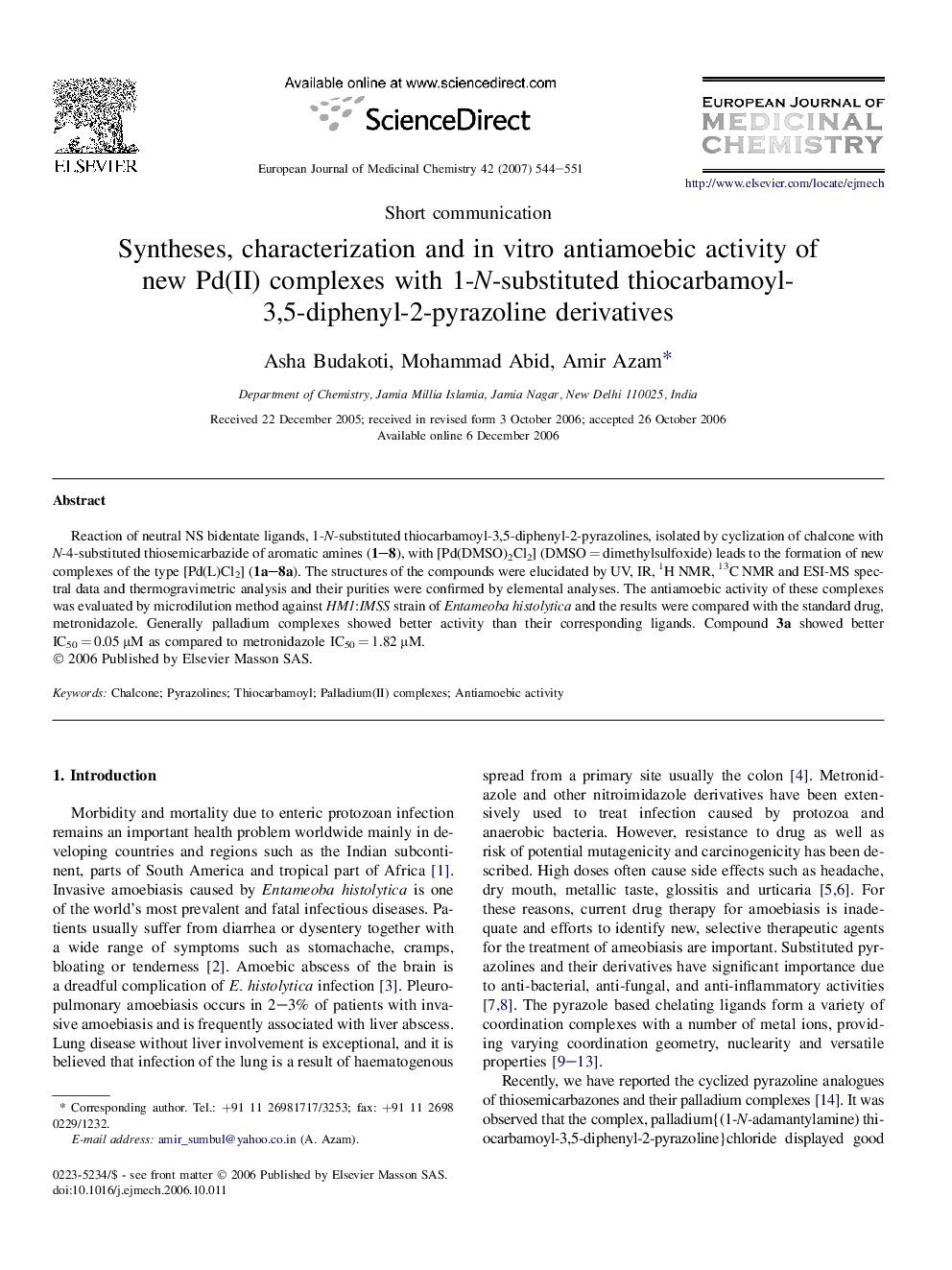| Article ID | Journal | Published Year | Pages | File Type |
|---|---|---|---|---|
| 1399924 | European Journal of Medicinal Chemistry | 2007 | 8 Pages |
Reaction of neutral NS bidentate ligands, 1-N-substituted thiocarbamoyl-3,5-diphenyl-2-pyrazolines, isolated by cyclization of chalcone with N-4-substituted thiosemicarbazide of aromatic amines (1–8), with [Pd(DMSO)2Cl2] (DMSO = dimethylsulfoxide) leads to the formation of new complexes of the type [Pd(L)Cl2] (1a–8a). The structures of the compounds were elucidated by UV, IR, 1H NMR, 13C NMR and ESI-MS spectral data and thermogravimetric analysis and their purities were confirmed by elemental analyses. The antiamoebic activity of these complexes was evaluated by microdilution method against HM1:IMSS strain of Entameoba histolytica and the results were compared with the standard drug, metronidazole. Generally palladium complexes showed better activity than their corresponding ligands. Compound 3a showed better IC50 = 0.05 μM as compared to metronidazole IC50 = 1.82 μM.
Graphical abstractThe palladium(II) complexes of 1-N-substituted thiocarbamoyl-3,5-diphenyl-2-pyrazoline derivatives were synthesized by the reaction of [Pd(DMSO)2Cl2] with thiocarbamoyl pyrazoline derivatives. Compounds 3 and 3a possessed better antiamoebic activity as compared to other ligands and complexes.Figure optionsDownload full-size imageDownload as PowerPoint slide
